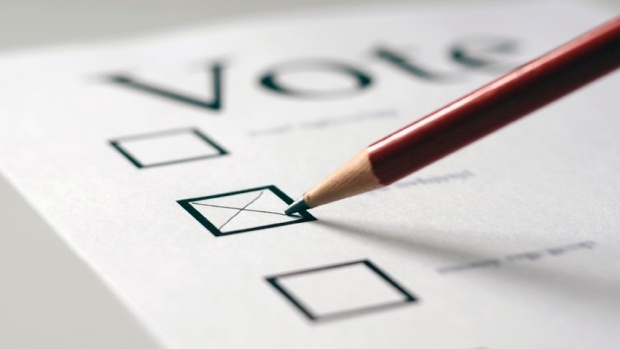Editorial: PART THREE -- on the upcoming referendum, and those PR voting systems
As promised, this Part will describe the Mixed Member Proportional system to achieve proportional representation in the BC Legislature. Part Two described the Dual-Member Proportional system, which would make most electoral districts larger, and assign two MLAs to each district by a system designed to achieve proportionality.
Mixed Member Proportional (MMP) would require enlarging BC’s electoral districts; it would ensure local representation in those larger districts, which would elect their MLAs by the current First-Past-the-Post (FPTP) method. At least 60% of the MLAs in the Legislature would be elected by the voters in their electoral districts, by FPTP.
No more than 40% of the MLAs would be “List PR” seats, and no party would be eligible for any List PR seats unless it had at least 5% of the vote provincially.
The List PR seats could be allocated within defined regions, not on a province-wide basis.
If BC voters choose a proportional representation system over FPTP, AND if most of them vote for MMP, then the Legislature have several decisions to make about particulars of the MMP system, including:
· The total number of MLAs for the province (but no more than 95);
· The exact ratio of FPTP seats to List PR seats;
· The design of the ballot: whether voters would have one vote that would count for both the local MLA and also the allocation of List PR seats, or two votes – one for the local candidate and another for the preferred party;
· Whether the “list” of party candidates would be closed – the order of the candidates chosen by the party – or open – voters vote for individual “list” candidates; or whether voters can have the option to either vote for the party’s choice or vote for particular candidates.
The Electoral Boundaries Commission would also have decisions to make:
· The number and shape of all the electoral districts (each would elect an MLA by FPTP);
· The number and shape of the regions for which List PR seats would be allocated to achieve proportionality in the Legislature, and which electoral districts each region would include;
· The number of list seats in each region.
I like the idea of having two votes – one for a local candidate and one to use either for list candidates OR for a political party. I can recall times when I was very impressed with a local candidate who did not represent my preferred political party, and would have liked to vote for her – but also to express my preference for the political party whose values and policies I support most strongly. With MMP, I might be able to do that – depending on the ballot design.
Some voters feel very strongly about the differences between closed lists (the order of the candidates being chosen by the party) and open list, in which voters rank the list candidates.
Some people criticize MMP because some MLAs – the “list” MLAs — are chosen from party lists instead of being directly elected: they complain that candidates are chosen by the political parties they will be representing. Reality check: all candidates of political parties are “chosen” by the parties they represent, and I suggest that most of them by far who get elected are elected because of their party rather than because of their personal qualifications.
Personally, I hope the parties know and vet their candidates effectively and can estimate which candidates are likely to be the best representatives of their region; voters often do not know much more about the candidates than which party they represent, or — if they’ve turned out to hear candidates speak – how well they express themselves orally. I like the idea of voters having the option to accept the party’s list choice, OR to vote for / rank the list candidates if they choose, provided that doesn’t complicate the tallying system too much.
In Part Two, I noted that the Dual-Member Proportional system is not yet in use anywhere in the world; it was developed for use in Canada, but has not yet been adopted anywhere. Mixed-Member Proportional, on the other hand, has been used in a number of countries for years, so it has been well tested.
When New Zealand switched to MMP from FPTP, as I pointed out in Part One, the country held a second referendum – just as BC will do if we vote for change – to see whether citizens still wanted to remain with the new system after trying it out for two election cycles. In New Zealand, the vote was to keep the new system of MMP.
In BC? Time will tell.
Here ends Part Three. In Part Four, I will describe the final Proportional Representation system that will be on the referendum ballot this autumn: Rural-Urban PR.
Readers who want the full report and recommendations of the Attorney General can find it here:


























